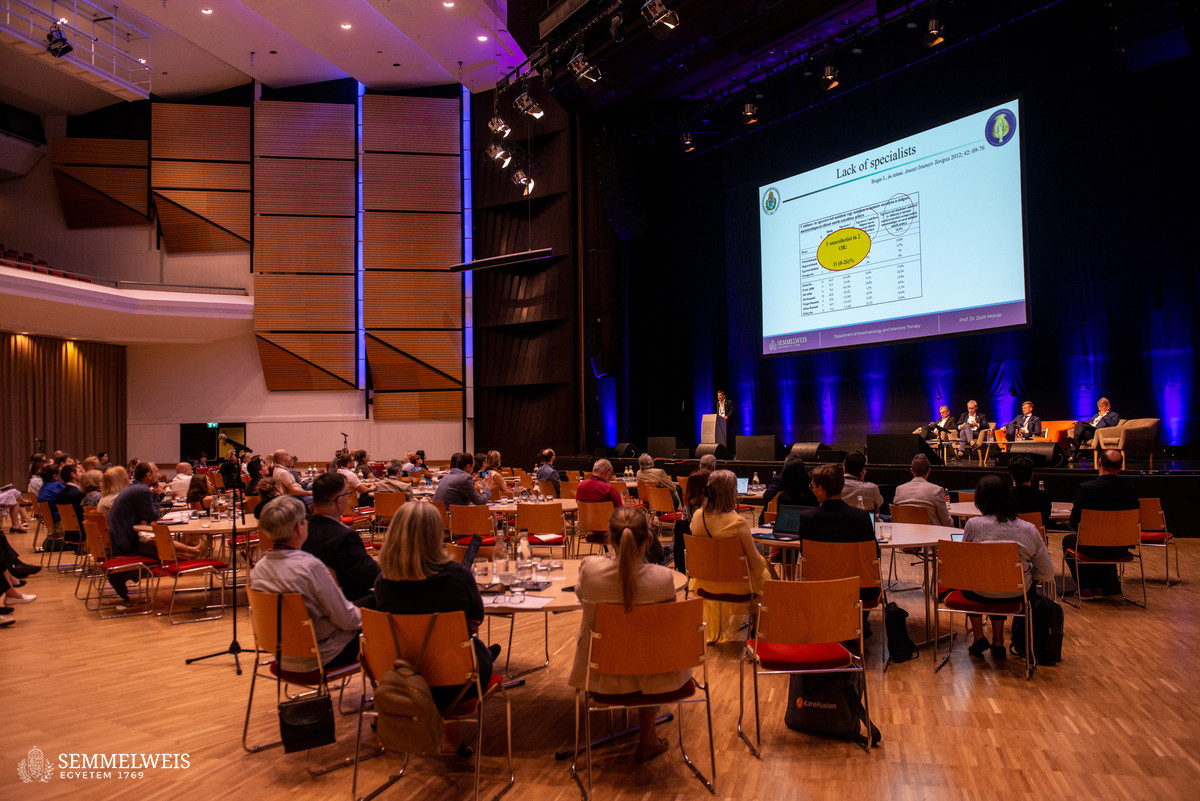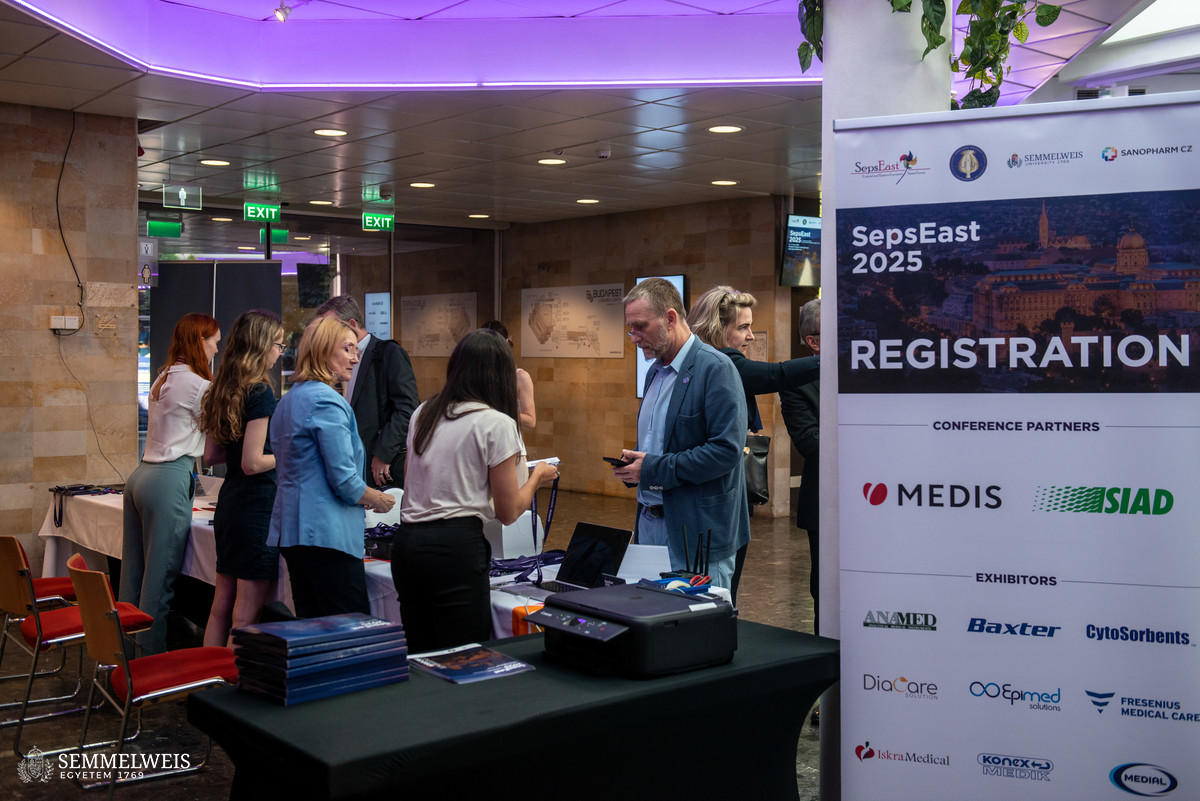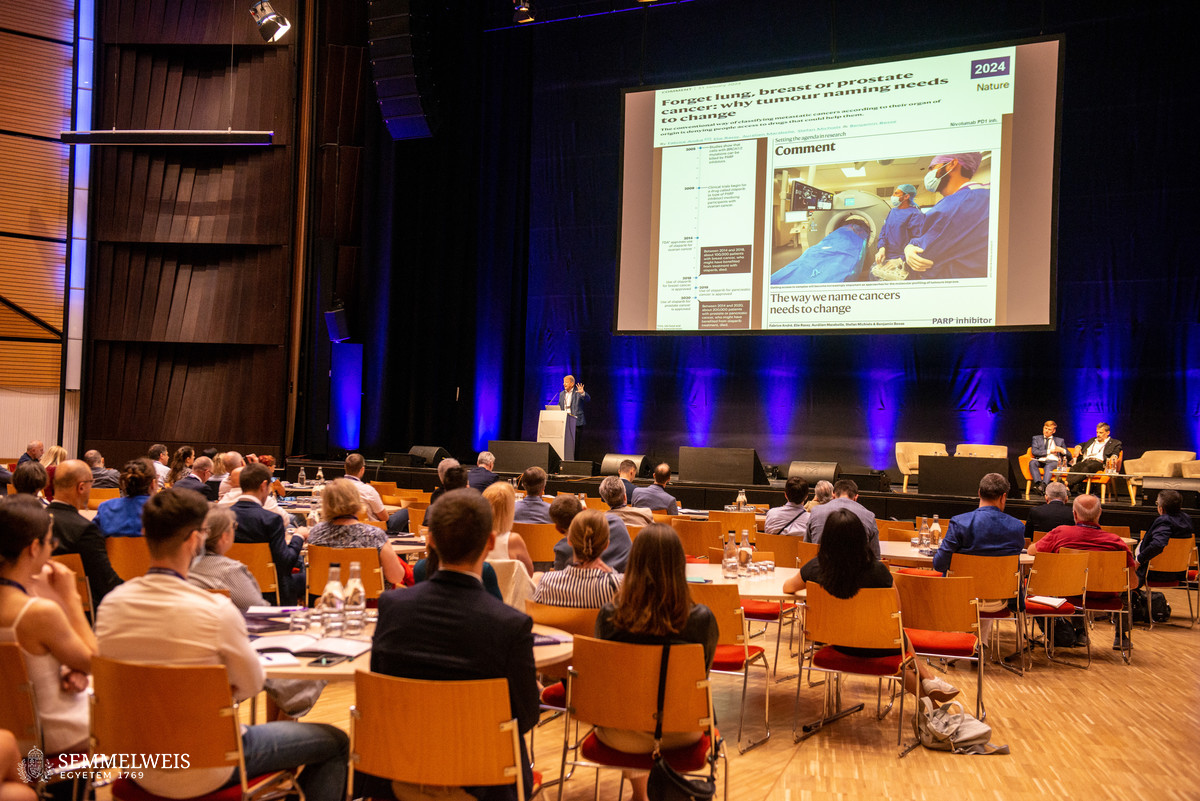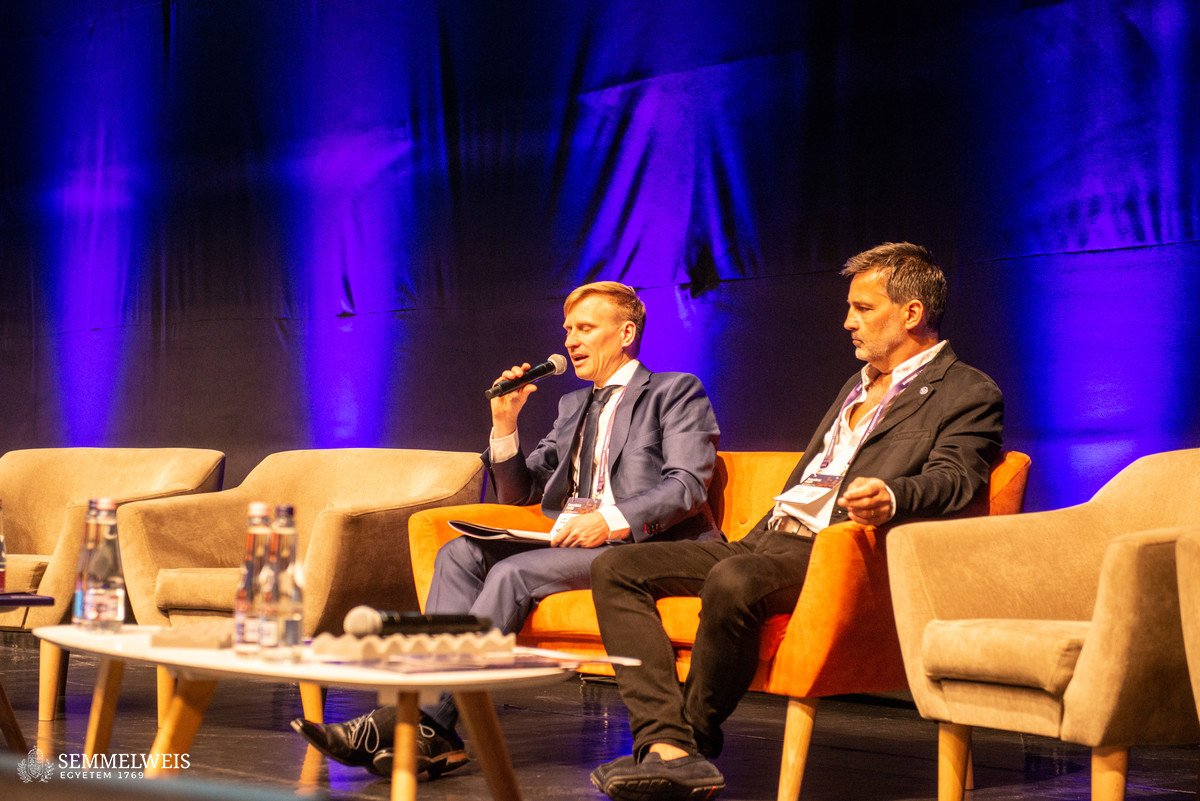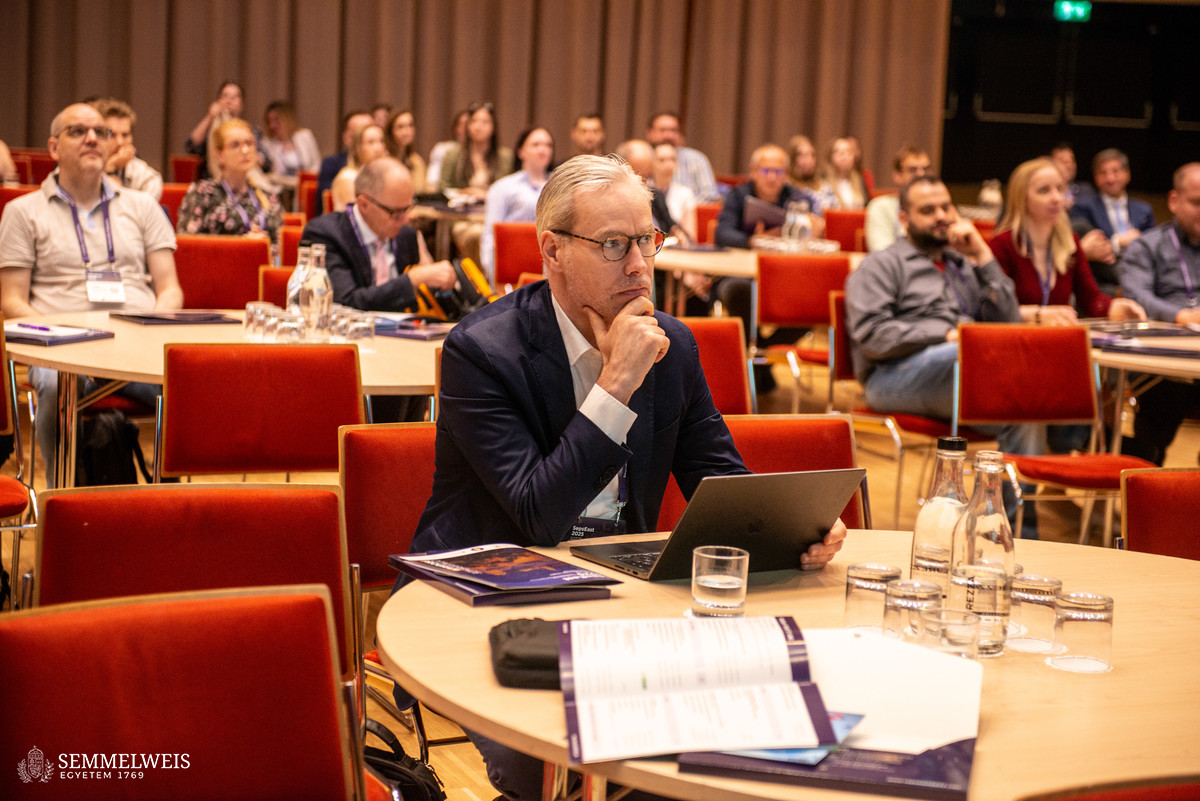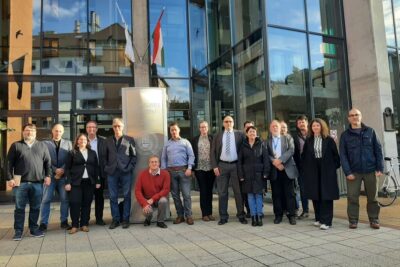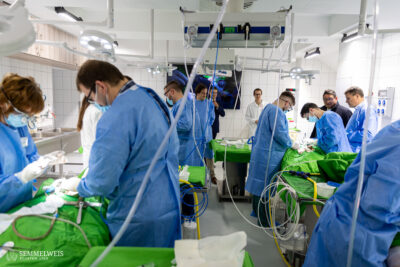Europe’s leading anesthesiology and intensive therapy specialists convened at the Budapest Congress Center on June 13 and 14 for the event organized by Semmelweis University’s Department of Anesthesiology and Intensive Therapy to discuss the most timely issues in the field and share the latest research results with each other. The SepsEast 2025 conference was organized on the initiative of Professor Dr. Zsolt Molnár, Director of the Intensive Therapy Clinic, with approximately 200 participants.
“The aim of the program launched by Dr. Zsolt Molnár in 2012 was to bring together thought leaders from Eastern Europe with experts from Western Europe at a conference held in Budapest,” recalled Rector Dr. Béla Merkely in his closing speech on the first day. “With Professor Molnár appointed as director of the clinic, the initiative got a second wind. As a result, leading experts in the field have again gathered in Budapest, arriving from England, Italy, Germany, the Czech Republic, Poland, and Croatia,” he added. Presentations were given by outstanding experts in the field such as Professors Jean-Louis Vincent and Jan de Waele. The rector emphasized that such a conference offered an excellent opportunity to deepen international relations in this field, which could pave the way for new scientific, educational, and training collaborations.
Speaking about the meeting, Dr. Zsolt Molnár said that the topics of the presentations included current issues such as the potential uses of artificial intelligence (AI) in intensive care medicine, which can be useful because AI is able to take into account all the important parameters of patients affected by up to four to five organ diseases and, based on this, it can make recommendations to specialists on the most appropriate treatment, who are then able to take decisions more quickly. Among the key topics, he also mentioned the fight against multiresistant pathogens, a phenomenon caused by an excessive and poorly dosed antibiotic treatment. Based on the latest clinical studies, it appears that, contrary to current practice, antibiotics should be administered for a shorter period of time but in much stronger, up to three or four times higher doses in order to prevent the development of resistant or multiresistant pathogens, Dr. Zsolt Molnár stressed.
Diabetic ketoacidosis is a serious metabolic condition that usually arises as a complication of Type 1 or Type 2 diabetes, but primarily of Type 1. This condition occurs when the body does not have enough insulin to convert glucose (sugar) into energy. As a result, the body tries to obtain energy from other sources, such as fats.
Dr. Zsolt Molnár also noted that in recent years, they had issued several D1 publications that made it quite likely for their results to be included in international guidelines. One such example is the treatment of diabetic ketoacidosis, in connection with which specialists of the clinic observed that balanced solutions are much more effective than the isotonic saline solution previously used: They can achieve faster clinical improvement since they contain various electrolytes that help maintain and restore the body’s physiological acid-base balance.
Dr. Zsolt Molnár emphasized that he considered it important to bring the SepsEast conference back to Budapest because sepsis was currently one of the leading causes of death worldwide. The reason for this is that today, doctors are able to perform increasingly serious interventions on ever older, frailer patients who may have several serious comorbidities, which increases the number of those who end up in critical condition and require intensive care. Although they can help most patients, the most severe form of sepsis, septic shock, can have a mortality rate of up to 50-60 percent. “Sepsis is the body’s severe reaction to various infections, which can only be combated with multidisciplinary, rapid, and effective action, requiring the full therapeutic arsenal of intensive care,” Dr. Zsolt Molnár pointed out.
One of the visions behind the creation of the SepsEast professional forum was to establish a healthcare and education system in which international standards are incorporated into domestic practice, as well as to make sure that domestic research results receive appropriate recognition at the international level and are included in professional guidelines, explained Dr. Zsolt Molnár.
He added that, in line with the university’s curriculum reform, they would like to teach students anesthesiology in real-life conditions in the operating room starting in September, which until now has been done primarily through simulation.
Eszter Keresztes
Translation: Dr. Balázs Csizmadia
Image credit: Sanopharm.cz
